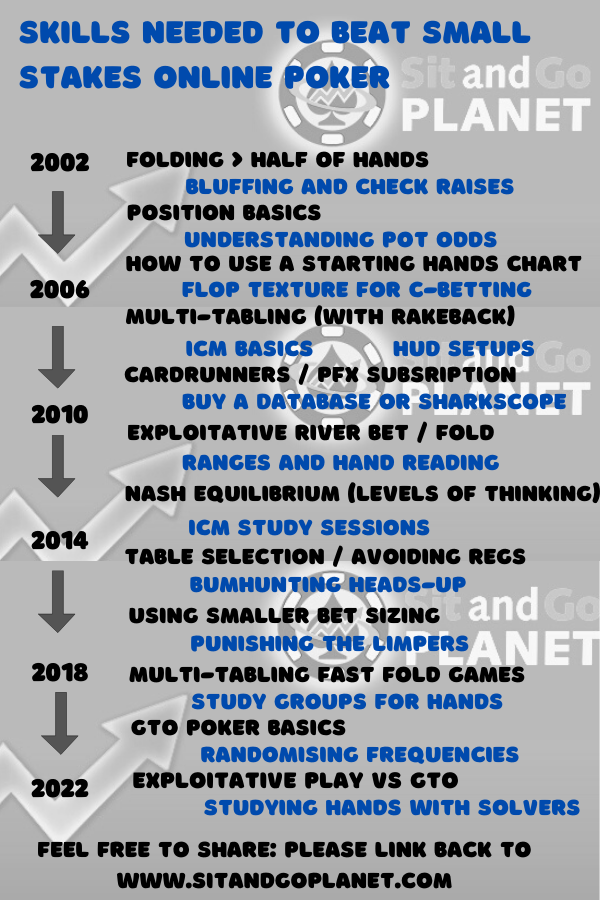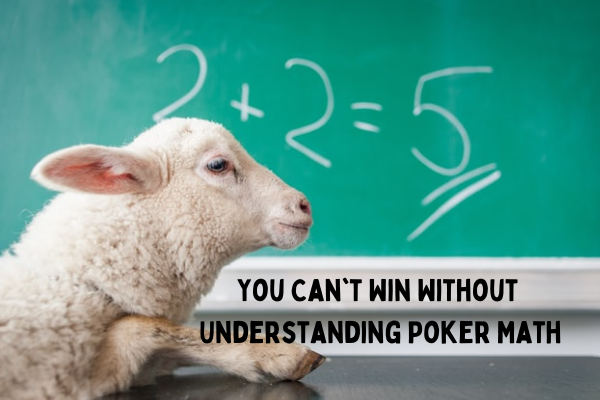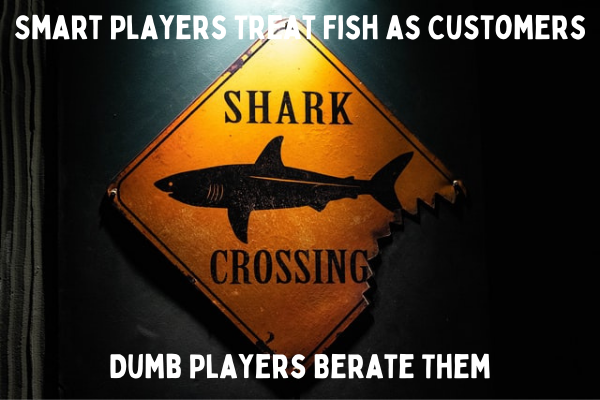Poker is unrecognisable today compared to the games of 2002/5.
What is more, the pace of change is accelerating.
A winning player of just 5 years ago would struggle against an army of grinders prepared to study using solvers, that know exactly when to deviate from GTO to exploit your weaknesses and muti-table fast-fold games.
This is a problem. New players at the lower to mid stakes used to have a chance of going on a good run. That would be enough for them to learn the ropes, enjoy the games and become long-term poker fans.
These days, new players jumping into $100NL and above have zero chance without the ability to learn fast and reload their accounts multiple times.
Below is a graphic I put together to show the minimum skills needed to be a winning player over time. I’m sure one or two things could be switched, and that there are also things that could be added.
Overall, this illustrates the barrier to new entrants to online poker games – if you disagree, do let me know.

I go into detail on each line of this graphic lower down the page.
Too Many Unknown Unknowns for New Poker Players?
It is not only that the grinders are too skilled. New players (even with some live experience) have no clue about the list of skills they need to develop. Those ‘unknown unknowns’ will see them relieved of their bankroll before they even guess what is happening!
While new countries were discovering online poker, this was less of a problem. These days, the never-ending pipeline of novices is running dry. Good regs are fighting bad regs for the remaining fish.
I will note that this is less of a problem in tournaments. For sit and goes, it is unlikely you get more than a couple of players that don’t understand ICM and the tight early / aggressive late format, even at the $11 or so level these days.
Explanations of the Poker Skills in the Graphic
For readers that are new to poker, or have not updated their strategy knowledge for a while, the list below covers the skills from my graphic:
Folding > Half of Hands:
When online poker was new you could get a huge edge by simply folding more hands than your opponents pre-flop. Games started as Limit Hold’em. Folding 50% to 70% of starting hands was unusual enough to make you a winning player. That is even before including things like position, aggression, and the tendencies of your opponents.
Bluffing and Check Raises:
Passive play will get you crushed in 2022. Back when online poker was new, this was perfectly normal. Limping, calling, and calling some more with anything half decent or any draw. Learning what spots to bluff raise with a draw and when to take that free card was a huge edge. Check-raising used to be considered ‘dark side,’ and was a powerful weapon to build a bigger pot.
Position Basics:
When No Limit Hold’em started, the tiny blinds compared to stacks made multi-way pots common. Understanding position and adjusting starting hands and play for this was rare. Simply folding more hands UTG and EP, and playing more hands, more aggressively, on the button was a serious edge. If you understood relative vs absolute position, you were probably profitable!
Pot Odds / Poker Math:
In the days when any two suited and any ace was a good enough hand, knowing whether you had a price to call or draw was important. People would regularly fold missed draws to one bet on the river. Concepts like calling bets getting 10-to-1 with a 25% chance of winning was not widely understood. Set mining and suited connectors without stack depth was a common mistake that was easy to exploit.

Using a Starting Hand Chart:
Any starting hand chart would give you a profitable edge in 2005. HUDs were not yet prevalent, tough any 20/13 (or similar) style using a basic position-enabled chart was a real edge. Any starting hand chart that accounted for position, along with sensible guidelines for multi-way pots was enough to make you a winning player.
Flop Texture for Continuation Bets:
Fit or fold, followed by big, desperate bluffs was just as common as the almost mandatory slow playing of aces back in the day. Knowing when to continuation bet was an edge in itself. The number of opponents, texture of the flop (likelihood of it connecting with the raiser or caller) and the tendencies of the other players all factored in. Getting continuation bets right was a regular source of small pots.
Multi-Tabling with Rakeback:
Around 2006 / 7, the rakeback boom was in full swing. You no longer needed to be a winning player to earn money playing poker. Instead, the goal switched to playing as many tables as possible, with the biggest rakeback deal. Players would nit it up, play thousands of hands per day, then get paid by the sites (or via affiliates) at the end of the week / month. It was possible to make $1000’s this way. Some players took it to extreme – earning elite status at bigger sites and making $100k+ yearly.
ICM Basics:
The Independent Chip Model shows that chip values in tournaments is non-linear. You did not need to study this in depth back in 2008. Merely understanding the idea, and that chips you lose in a final table or SNG Bubble are worth more than those you win, was enough to get an edge. If you could do a few examples and see how calling / all-in ranges moved in common spots, then your edge was big.
HUD Setups:
Alongside the rakeback / multi-tabling boom came ‘Heads Up Display’ software. This has been banned by major sites today. It collected hand histories and overlaid the stats of each player on the screen. You could see the VPIP (how tight / loose), the Continuation betting style, how often a player went to showdown (their stickiness) and many more detailed stats.
This meant you no longer needed to watch opponents to profitably multi-table. It made spotting fish / new players easy (their stats stood out a mile) and was a major factor in making the games tougher. Not having a HUD was a serious disadvantage – you needed one just to compete.
Cardrunners / Poker X Factor Subscription:
There were other poker training subscription sites, though back in 2008/9, PxF and Cardrunners were the giants. You could be coached via video by ‘Johnny Bax,’ ‘Sheets,’ ‘BelowAbove’ and countless others. Some players watched; others took learning more seriously – with some breaking through. There are still poker training sites in 2022 – the serious / mathematical content on them would make these old sites look basic today.
Buy a Database / Sharkscope:
With almost everyone serious about poker using a HUD, a new way to get an edge emerged. You could buy databases of millions of hands. These were scraped from sites direct or combined from the personal databases of other HUD users. With hand info on millions of players, you did not need to collect information by playing against them yourself – a big edge.
Sharkscope was the first of many sites which scraped results. You could look up opponents, seeing who was a winning player, what volume of games (and buy-ins) they played, and how long they had been playing for. There were incidents where idiots at the tables would call others fish based on these results… crazy behaviour if you think about it. Why berate the exact players who are donating most money to the games??

Exploitative River Bet / Fold:
This almost seems like too simple a strategy to give you a big edge. Folding after betting the river was rare until this point. Pros started going for thin value in spots where they knew full well that any raise meant they were behind. This is a great example of something that seems totally standard today – and had a few years of being super-profitable only 12 or 13 years ago. Floating the flop was another strategy that went from niche to standard at about this time.
Ranges and Hand Reading Skills:
While hand reading was known by high stakes pros, it did not hit mainstream strategy in a standardized way until later. Narrowing down ranges based on starting hands, flop texture and betting tendencies was a big shift. The new question while playing was ‘how does my hand do against this range?’ Combine this with HUD stats, and your own read on a player’s style, and hand reading moved from being an art to a science.
NASH Equilibrium and Levels of Thinking:
NASH is easy to demonstrate in a simplified heads-up ‘toy game’ using a short deck. If you think your opponent is raising with 100% of hands with a pot of $X, you can profitably call with 65% out of position. Now, if your opponent realises you have adjusted this way, they will only raise 75% of hands – which is profitable in this toy game against your calls. If you know they have adjusted, you can call with 50% only – to which they adjust and so on.
Levels of thinking is a more general way of looking at these adjustments. If my opponent knows that this flop is unlikely to have helped me, they will bet with 90% of their starting hand range. If I know this, then I should call with XX% (and so on). Add in check-raises and multi-street betting, and this type of thinking is a huge edge over anyone thinking only of their own two cards.

ICM Study Sessions:
Eventually, merely knowing the basics of ICM was not enough to keep an edge in tournament play. You needed to actively study this to beat opponents at mid-stakes and above. That meant highlighting spots where you were unsure for later study. By getting to know the common spots inside and out, using tools like SNG Wiz (ICMIZER these days), you could get a small edge over and over again. This era marked the shift from fat edges to thin edges – as the number of regulars to fish was getting tilted in favour of the regs.
Table Selection and Avoiding Regulars:
By 2014 / 15 online poker was running out of fish. Sure, there are always new players at every site. The speed with which they were getting stripped of their bankrolls meant that the tables were now reg heavy.
I always hated the claim that regs were ‘providing a service’ by multi-tabling. Sure, there was liquidity (lots of tables to choose from), only any new player that did turn up at a 6-max table with 5 experienced regulars was almost guaranteed to go broke. The benefactors were the regs themselves, not the ‘poker ecosystem’ at all.
At the same time, playing only regulars was less profitable. Those rakeback deals were disappearing at bigger sites, and hunting for fisher sites / playing at peak times for amateurs (weekends and evenings) was a must.
Bumhunting Heads-Up:
A short-lived variation on advanced table selection was specifically for heads-up cash games or heads-up SNGs. Experts in these games had a huge edge – even against opponents that were winners in six or nine handed games. People sat in these games, avoiding the known regulars (each other) and waiting for fish to appear. For a few years, it worked brilliantly.
Smaller Bet Sizes for Better Hand Reading.
Opening 2x or 2.2x the blind is relatively new. 3x used to be standard, with 4x not uncommon. These days, if you see someone regularly opening 3x or more, they are probably new to online poker, with some live experience a factor.
Betting a quarter pot on the flop (or a third) was likewise unusual previously. This adds a new dimension to hand reading, giving good players a lot more information to work with over multiple streets.
Punishing the Limpers:
With HUDs disappearing, watching for limpers became a new way of identifying recreational and newer players. Pros or grinders so rarely limp that this is a giant red flag. With position, raising to isolate these limpers with a wide range of hands is profitable.
The fun starts when other regulars know that you have a super-wide range. Exploitative 4 bets (especially in position) lead to interesting dynamics. All the time, those initial limpers have no clue as to the levelling game being played behind them.
Multi-Tabling Fast-Fold Games:
With all this knowledge, getting those hands in became necessary to multiply those tiny edges into an income stream. Fast Fold games like Zoom had been around for years. By around 2018, the best grinders were battling it out on these tables. The ability to get 1000’s of hands per hour is just too good to pass up. Even a competent opponent that does not study as hard will lose quickly at $2 / $5 Zoom, there are too many spots for pros to accumulate those thin edges.
Study Groups for Hands:
Again, this has always been there in one form or another. By the end of the 2010’s, pros needed that feedback from each other to spot their leaks. This works from $100 NL grinders all the way to the high stakes pros. If you are not in a group, try reaching out to your peers today.

GTO Poker Basics:
Game Theory Optimal is the next iteration of NASH equilibrium poker. This style is based on becoming unexploitable. You call, raise and fold against ranges derived from the ‘they think I think…’ system. Keeping the pots manageable and letting your opponents make the mistakes are key. GTO poker is used in both cash games and tournament play. It is far from nitty, adjusting to the frequencies of opponents.
Randomising Betting Frequencies:
Calling or raising with certain hands in an unpredictable way makes it difficult for opponents to put you on a hand. Dan Harrington introduced this idea way back, and high stakes pros have been using it. Recently, widgets for your phone or PC can allow you to randomise 30% raises with hand X from position Y when facing an open pre-flop (for example).
Exploitative Play vs GTO:
If you are playing against regulars equally as skilled as you, then GTO play will help stop you losing to them. What GTO won’t do is maximize your profit against weaker players. Knowing when you take the theoretical line and when to deviate to increase your profit is a skill that gives you an edge over players that are purely math driven.
Studying Hands with Solvers:
Just like knowing ICM was enough without deep study until study of it blunted the edge – the same process is underway with GTO poker. The basics and ‘rules of thumb’ are easy enough to learn. However, knowing the math, knowing the spots where even solid players make small mistakes and knowing how to navigate complex situations is now where the edges come from. Saving hands and running them through solvers is needed to stay profitable in an ever more competitive world.
Beating Online Poker in 2023 and Onward?
You need all the skills above to have a shot these days in all but the lowest stake games. There are enough regulars to keep the fish numbers from growing, and many competing pastimes for those fish. Back in 2008, everyone was trying poker. These days, most of the demographic that would have embraced it are trading instead. Play to earn games like Axie Infinity are also competition for player time.
The thing about the latest skills to get an edge is that they are easy to see in hindsight.
GL at the tables!
Mark
PS: Feel free to share my graphic from the top of this page, I’d genuinely appreciate a link back if you do use it on your site or social media – thanks!
If you enjoyed this post, why not check out these ones:
- Scotty Nguyen WSOP Legend (one of a series of history / bio posts of the greats of years gone by)
- Deposit Methods for Offshore Poker Sites (the cat and mouse game continues!)
- Inflation in Poker (how much would it cost to enter the WSOP if the $10k entry fee had risen to keep up with inflation?)
Submitted by Planet Mark on Fri, 02/18/2022 - 11:37


